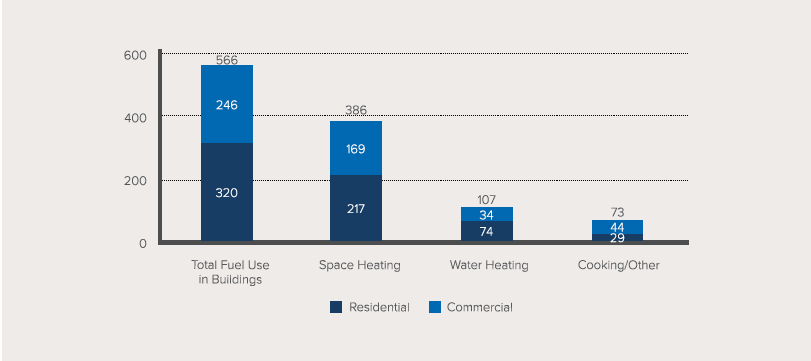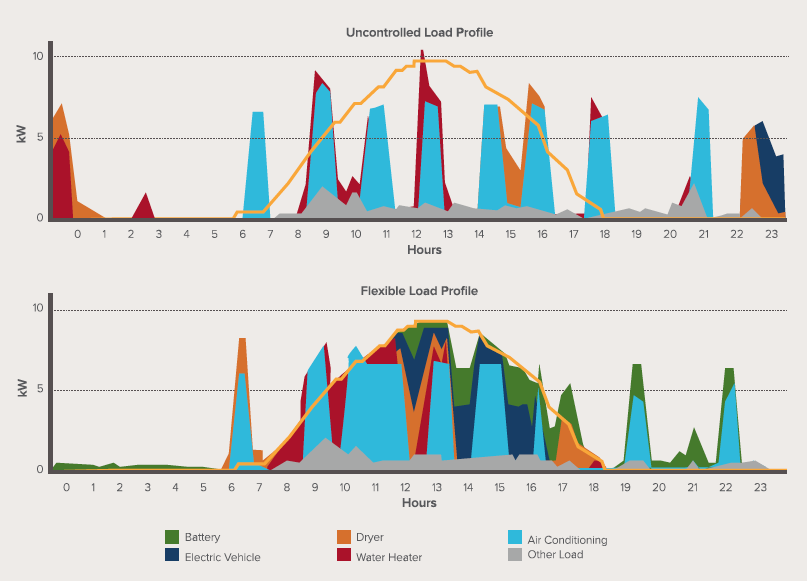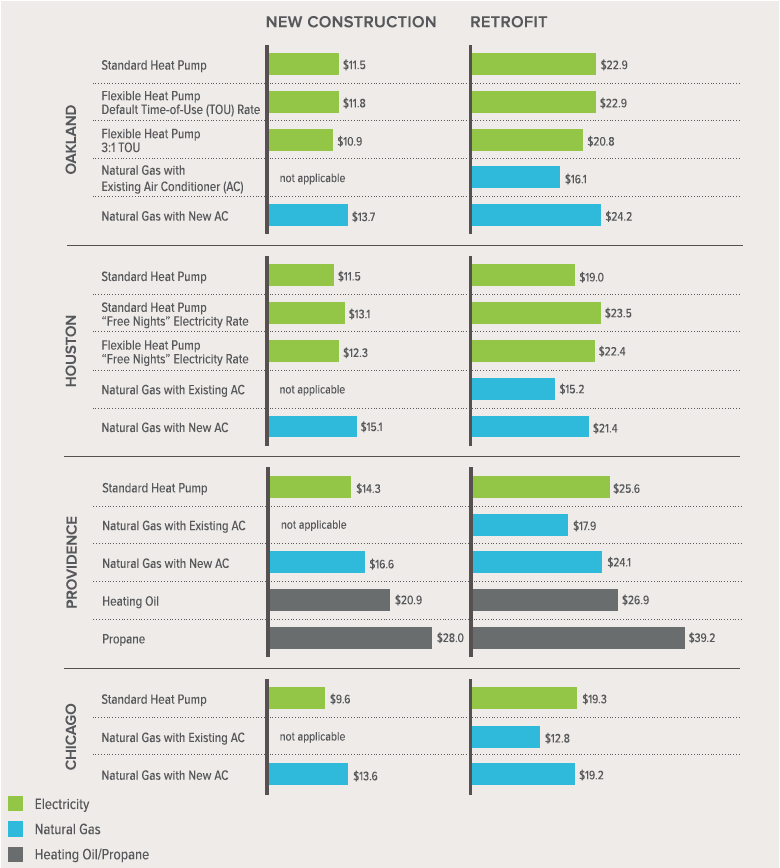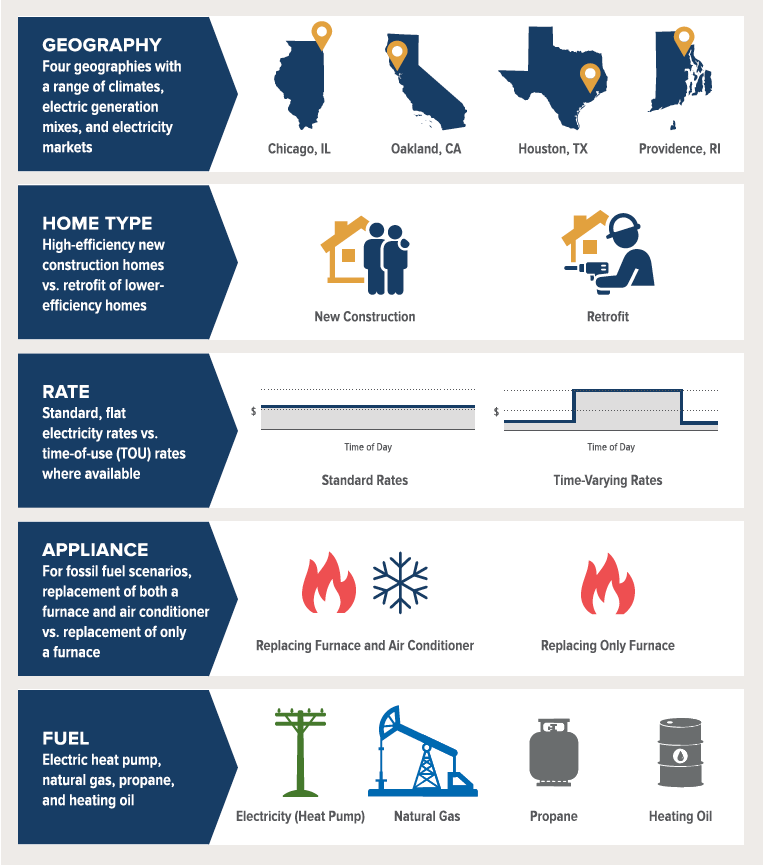
Seventy million American homes and businesses burn natural gas, oil, or propane on-site to heat their space and water, generating 560 million tons of carbon dioxide each year—one-tenth of total US emissions. But now, we have the opportunity to meet nearly all our buildings’ energy needs with electricity from an increasingly low-carbon electric grid, eliminating direct fossil fuel use in buildings and making obsolete much of the gas distribution system—along with its costs and safety challenges.

Carbon Emissions of Fossil Fuel End Uses in US Builidings, 2015, MT CO2E
In RMI’s new report, The Economics of Electrifying Buildings, we analyze the economics and carbon impacts of electrifying residential space and water heating both with and without demand flexibility—the ability to shift energy consumption in time to support grid needs. We compare electric space and water heating to fossil-fueled space and water heating for both new construction and home retrofits under various electric rate structures in four cities: Oakland, California; Houston; Providence, Rhode Island; and Chicago.

Demand Flexibility Can Shift Loads into Times of High Renewable Output or Low Cost
In many scenarios, notably for most new home construction, we find electrification of space and water heating and air conditioning reduces the homeowner’s costs over the lifetime of the appliances when compared with performing the same functions with fossil fuels. Costs are also reduced for customers in several retrofit scenarios: for customers switching away from propane or heating oil, for gas customers who would otherwise need to replace both a furnace and air conditioner simultaneously, and for customers who bundle rooftop solar with electrification. New homes and homes currently lacking natural gas service also avoid the cost of gas mains, services, and meters not needed in all-electric neighborhoods.

Comparisons of 15-year Net Present Costs of Water Heating and Space Conditioning (Thousand $)
Reaching “deep decarbonization” goals of 75 percent or greater reduction in greenhouse gas emissions will require eliminating most of the CO2 produced by furnaces and water heaters across the country, alongside other measures across the economy. Further, electric space and water heating can be intelligently managed to shift energy consumption in time, aiding the cost-effective integration of large amounts of renewable energy onto the grid.

Scenario Characteristics